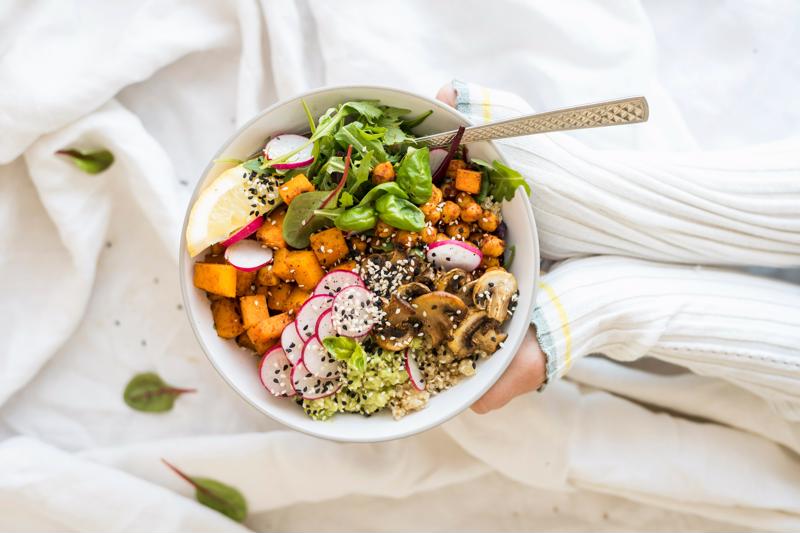A lot happens in 10 years, particularly in the culinary world, and the 2010s were no exception. Austin culinary students perhaps know this better than anyone, but the hallmark of the past decade was arguably the shift toward foods with fresh ingredients. Case in point, American cheese sales are declining, largely because this generation of eaters prefers artisanal, unprocessed cheeses. As a whole, the more recognizable – and pronounceable – the ingredients, the better.
The journey of frozen foods illustrate this story well. In the middle of the 2010s, they started to see a drop-off. However, recent research from the American Frozen Food Institute (AFFI) documented an uptick in 2018 and 2019 sales. The main reason for the resurgence is that manufacturers have gone to great lengths to market the nutritional benefits and wholesomeness of their frozen products. Many frozen-food manufacturers have also increased health and sustainability labeling, such as non-GMO, all-natural ingredients and no artificial flavoring.
But the growing focus on sustainable, all-natural ingredients is only one of many trends that define the 2010s. With a new decade inching ever-nearer, let’s send off the one that was with a look back on some of the other big food trends:
Social media food presentation
It’s hard not to Instagram a really well-presented meal these days, which ultimately benefits restaurants that put craft into the presentation of each dish. These days, the visual appeal of a plate doesn’t just add to the experience; it’s a form of free marketing. A well-plated dish can help generate buzz for your restaurant – as will likely continue to be the case well into the 2020s.
 Grain bowls became a popular vegan and health food trend during the 2010s.
Grain bowls became a popular vegan and health food trend during the 2010s.More gluten-free, vegetarian and vegan options
Markets for gluten-free ingredients have experienced growth through much of the 2010s and will continue to see more growth at least through 2022, according to Food Business News. Likewise, the demand for vegetarian and vegan cuisine has increased over the past few years. The Economist has even called 2019, “the year of the vegan.” The gravitation toward vegetarianism and increased focus on whole foods also led to some interesting trends, such as a notable cauliflower craze, where everything from pizza crust to Alfredo sauce was made from the cruciferous vegetable.
Meat substitutes
In that same vein, the 2010s were a time of culinary exploration for meat substitutes that went beyond the familiar soy-based alternatives. Cauliflower, jack fruit, eggplant, mushrooms, legumes, chickpeas and sweet potatoes have been used in lieu of meat in burgers, chicken wings, pulled-pork sandwiches, steaks and more. Then of course, there are the plant-based meat substitutes such as The Impossible Burger and Beyond Meat, which are currently taking markets everywhere by storm.
A bacon bonanza
Bacon’s best days are arguably behind it, with “Bacon Mania” being more of a late ’90s and early ’00s trend that accompanied the popularity of the Atkins diet. Nevertheless, the greasy, fatty food had a bit of a resurgence in the middle of the decade. Gimmicks such as bacon ice cream, Baconaise (a bacon-flavored mayonnaise product), and even Bacon Salt had their moments in the sun. In fine dining, meanwhile, restaurateur Drew Nieporent made a bacon-wrapped lamb entree one of the centerpieces of his 2014 opening of Batard in New York, according to Eater. In 2015, The New York Times covered the opening of BEC, a restaurant that specializes in gourmet bacon, egg and cheese. Alas, Inside Hook believes the bacon bonanza is fizzling out, and dropping sales starting in 2016 seem to support this claim. But if we know anything about bacon, it’s that it probably won’t be down and out for long. We wouldn’t be surprised to see it peak once again in the 2020s.
Avocado toast
We close out where the decade started: with avocado toast. It went from being somewhat bohemian in the early part of the decade to “basic” but still popular, according to Time Out. Avocado sales are still quite high, and we expect them to remain high for the start of the 2020s.
And that’s a wrap – on this article, and on the 2010s. To all our students at the Austin culinary campus, have a great holiday, and a happy new year.


